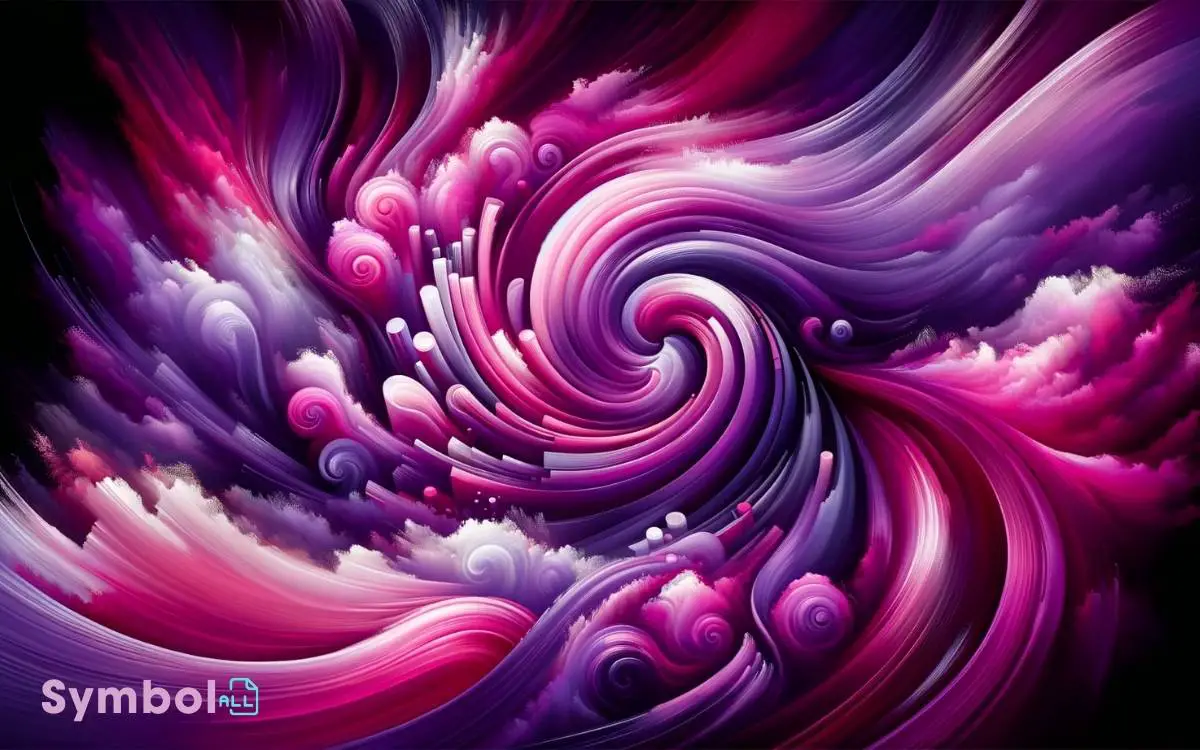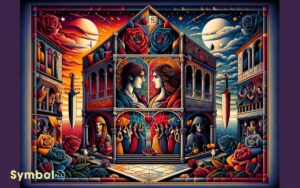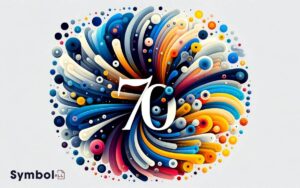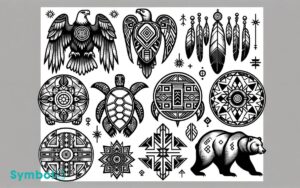What Does the Color Magenta Symbolize? A Guide!
You often see magenta and might wonder about its deeper meanings. This vibrant hue symbolizes innovation, non-conformity, and creativity, blending the passion of red with the tranquility of blue to foster balance and emotional well-being.
Magenta touches the domains of spirituality and healing, promoting introspection and connection to higher consciousness. It holds a unique position in color psychology, influencing mood, behavior, and decision-making by stimulating your inner consciousness.
In branding and design, magenta communicates uniqueness and readiness to pioneer. Engaging with magenta could reveal new dimensions in your understanding of color’s impact on the human psyche and cultural expressions.

Key Takeaway
The Origin of Magenta
Delving into the origin of magenta reveals a fascinating blend of chemistry, history, and cultural evolution.
You’ll find that magenta’s birth wasn’t just a mere proof but a demonstration of human curiosity and ingenuity.
Discovered in the mid-19th century, magenta emerged from the synthesis of aniline dyes, marking a revolution in the textile industry.
Its creation wasn’t solely for aesthetic appeal; it also reflected the era’s technological advancements and society’s growing appetite for vibrant colors.
Unlike natural dyes, which had limitations in hue and saturation, synthetic magenta offered unprecedented vibrancy and consistency, setting the stage for modern color manufacturing.
This innovation didn’t just change how you perceive color; it reshaped your interaction with the world, blending science and culture into the vivid hue you recognize today.
Magenta in Psychology
Understanding the history and origin of magenta allows us to appreciate its profound impact on psychology, where color greatly influences human emotion and behavior.
In psychological terms, magenta isn’t just a hue; it’s a powerful tool that interacts with our minds in unique ways.
Scientific studies suggest that colors can affect memory recall, decision-making processes, and even physical strength, with magenta often evoking creative and unconventional thinking.
It bridges the gap between the physical and spiritual, encouraging a balance that can lead to heightened awareness and personal development.
Psychologists observe that exposure to magenta can stimulate deeper introspection and problem-solving skills, making it a color of significant interest in therapeutic settings.
Its presence in an environment is believed to foster an atmosphere of cooperation and innovation.
Emotional Influence
Magenta’s emotional influence on individuals is profound, directly impacting mood and emotional well-being with its vibrant energy.
This unique hue, straddling the line between red and purple, harnesses the passion and power of red, alongside the calm and introspection of purple, creating a balance that stimulates both energy and serenity.
Scientifically, colors have been shown to affect psychological functions, with magenta specifically fostering creativity, encouraging empathy, and uplifting spirits. It’s not just a visual experience; it’s an emotional catalyst that can alter your state of mind.
By surrounding yourself with magenta, you’re inviting a blend of warmth and coolness into your life, encouraging a harmonious emotional state that balances ardor with tranquility, thereby enriching your emotional landscape.
Magenta and Spirituality
Exploring the domain of spirituality, you’ll find that magenta carries profound symbolic significance, bridging physical energy with spiritual enlightenment.
This vibrant hue embodies the balance between red’s physical vitality and violet’s calm spirituality, creating a synergistic effect that fosters emotional and spiritual healing.
Scientifically, colors influence brain activity and emotions, and magenta’s unique position in the color spectrum enables it to stimulate deep introspection and a heightened state of awareness.
It’s not just a color; it’s a tool for transcending the mundane, facilitating a connection to higher consciousness.
Engaging with magenta in meditation or mindfulness practices can help you access inner wisdom, promote harmony, and nurture a sense of universal love, underscoring its pivotal role in spiritual development and self-discovery.
Cultural Significance
Across various cultures, magenta holds a rich tapestry of meanings, reflecting its impact on societal values and traditions.
In many societies, magenta isn’t just a color; it’s a symbol of non-conformity and innovation, challenging the norms with its vibrancy.
Scientific analysis shows that magenta doesn’t have a fixed place on the light spectrum, making it a color that literally defies conventional categorization.
This characteristic mirrors its cultural perception as a color that encourages thinking outside the box, fostering creativity and originality.
Moreover, its rarity in natural environments elevates its status, often associating it with luxury and exclusivity in cultural contexts.
This dynamic interplay between magenta’s visual properties and its cultural interpretations underscores its significance in shaping human perception and societal values.
Magenta in Fashion
In the world of fashion, magenta commands attention as a bold color choice that simultaneously challenges traditional palettes and signifies a wearer’s confidence and creativity.
Its unique position on the color spectrum—neither purely red nor violet—allows it to stand out, fostering an aura of individuality and innovation.
Designers often leverage magenta to inject vibrancy into collections, understanding its power to evoke emotions and influence perception.
Scientifically, magenta’s high visibility can alter the viewer’s energy levels, increasing enthusiasm and interest.
This psychological impact makes it a strategic choice for statement pieces or accents, aiming to captivate and provoke thought.
Consequently, magenta’s inclusion in fashion underscores a deliberate move towards expressive, emotionally resonant design.
Artistic Expressions
In exploring artistic expressions, you’ll find that magenta carries a profound ability to convey emotion, setting it apart in the palette of visual artists.
Its role in visual arts can’t be overstated, often acting as a linchpin for creativity and color choice that resonates on a deeply psychological level.
This choice of color not only influences the viewer’s perception but also underscores the artist’s intent, bridging the gap between concept and audience with its vibrant hue.
Emotion Through Color
Artists often harness the power of colors like magenta to evoke specific emotions, demonstrating how hues can profoundly impact our psychological state.
This vibrant color straddles the line between red’s warmth and blue’s coolness, embodying a unique balance that stimulates both energy and calm.
Scientific studies suggest that magenta can influence feelings of empathy and kindness, encouraging a sense of harmony and balance within the viewer. It’s not just a visual experience; it’s an emotional journey.
Through careful application, artists can use magenta to guide the viewer’s emotional response, crafting experiences that resonate on a deeply significant level.
This strategic use of color underscores its role not just as a tool for aesthetic appeal, but as an essential component in the artist’s emotional palette, shaping how we perceive and interact with art.
Magenta in Visual Arts
How does magenta manifest in the domain of visual arts, and what unique qualities does it bring to artistic expressions? Its vibrancy offers a visual pop that can influence the mood and focus within a piece.
Magenta carries a sense of innovation and non-conformity, often utilized to draw attention to specific elements or convey a deeper metaphysical meaning.
| Impact on Viewer | Example in Art |
|---|---|
| Emotional depth | Magenta skies in expressionist paintings |
| Visual focus | Accent colors in modern art installations |
| Symbolic meaning | Representing transformation in abstract pieces |
| Energy and vibrancy | Background hues in pop art |
Artists leverage magenta’s intensity and depth to create compositions that are not only visually striking but also rich in symbolism and emotional resonance.
Creativity and Color Choice
Delving into the domain of artistic expressions, your selection of color plays an important role in shaping the creativity and impact of your work.
When you choose magenta, you’re not just picking a color; you’re invoking a spectrum of psychological and emotional responses.
Scientific studies suggest that colors like magenta can greatly influence perception and cognitive processes.
This vibrant hue, straddling the line between red and purple, symbolizes a blend of passion and innovation. It encourages viewers to think beyond conventional boundaries, fostering an environment ripe for creative exploration.
Incorporating magenta into your artistic endeavors doesn’t merely add a splash of color—it embeds your work with a layer of complexity and invites a deeper engagement from your audience.
The Harmony of Magenta
Magenta’s unique blend of red and blue not only captivates the eye but also creates a sense of balance and harmony in visual compositions.
This equilibrium isn’t just a happenstance of aesthetics; it’s rooted in color theory and psychology.
Red, often associated with energy and passion, meets the calmness and stability of blue to produce magenta, a color that can convey both excitement and serenity.
This duality allows magenta to bridge emotional gaps, making it a versatile choice in design and art.
Furthermore, scientifically, magenta doesn’t exist as a single wavelength of light but is a perceptual effect.
This phenomenon underscores its role as a mediator, blending the visible spectrum’s ends to craft a unique, harmonious experience for the viewer.
Magenta in Branding
In the domain of branding, magenta stands out as a powerful tool for companies aiming to evoke a sense of innovation and creativity.
This vibrant hue captures attention with its blend of red’s warmth and blue’s coolness, creating a dynamic balance that’s both inviting and forward-thinking.
Scientifically, magenta doesn’t have a wavelength of its own, making it a color of perception rather than a spectral reality.
This aspect is metaphorically leveraged in branding to suggest that a product or service transcends the ordinary, offering experiences or values that aren’t found in the natural spectrum of competitors.
Utilized strategically, magenta communicates a brand’s readiness to pioneer, while also being approachable, nurturing a unique identity in a crowded marketplace.
Innovation and Creativity
Building on the role of magenta in branding, let’s explore how this color embodies innovation and creativity across various domains.
Magenta isn’t just a hue; it’s a statement of boldness and originality. Scientifically, magenta doesn’t have a singular wavelength of light, unlike most colors.
This absence in the visible spectrum means magenta is a product of our brain’s interpretation, blending red and violet wavelengths.
This unique origin mirrors the essence of innovation—creating something new and valuable from existing elements.
In creative fields, magenta’s vibrancy encourages out-of-the-box thinking, pushing boundaries beyond the conventional. It’s a visual cue that signals openness to new ideas, making it a favorite among industries aiming to stand out and innovate.
The Feminine Power
You’ll find magenta represents not just aesthetic choices but also embodies a potent symbol of feminine power and empowerment across the globe. It’s intricately linked with cultural gender associations, shaping perceptions and roles in society.
This hue acts as a beacon, advocating for women’s empowerment and challenging traditional narratives.
Empowering Women Worldwide
Magenta signifies the unwavering strength and vibrant spirit of women, empowering them to break stereotypes and lead with confidence across the globe.
This color embodies a powerful combination of red’s energy and passion with purple’s wisdom and dignity, creating a visual representation of women’s ability to navigate complex challenges with grace and assertiveness. This dynamic blend reflects resilience and perseverance, signifying a strength that is both bold and compassionate. The color crimson symbolism in love further enhances its meaning, representing deep affection, emotional intensity, and unwavering commitment. Together, these attributes make this hue a potent emblem of empowerment, inspiring confidence and unity in the face of adversity.
Research in color psychology suggests that magenta can have an uplifting effect on emotions, fostering a sense of optimism and courage.
This is vital in empowering women, as it strengthens their mental resilience against societal pressures.
Additionally, magenta’s unique position on the color spectrum embodies the balance between emotional warmth and cool, logical thought, mirroring women’s capacity to lead with both empathy and strategic foresight.
Cultural Gender Associations
Throughout history, cultural narratives have deeply embedded the color magenta with connotations of feminine power, shaping societal perceptions and gender roles.
This association isn’t arbitrary; it’s rooted in the scientific understanding of color psychology and its impact on human behavior.
Magenta, a blend of red and blue, harmonizes qualities traditionally seen as masculine and feminine, creating a visual symbol of balance and equality.
Its vibrancy demands attention, embodying strength and confidence, traits often encouraged in women pursuing for empowerment.
As you explore into the symbolism of magenta, you’ll find it’s more than a color; it’s a statement. It challenges outdated norms and celebrates the dynamic essence of femininity, making it a powerful tool in the narrative of gender equality.
Magenta in Nature
In nature, magenta pops up in a variety of flora and fauna, serving as a vivid exploration to the richness of color in the natural world.
When you investigate into the scientific reasons behind this vibrant hue, you uncover a world of fascinating insights. Magenta isn’t just a color; it’s a signal, a way for organisms to communicate important information.
- Flowers: Many species, such as the magenta petunia, use vibrant colors to attract pollinators.
- Birds: Some birds display magenta plumage as a mating signal.
- Insects: Certain butterflies boast magenta patterns to ward off predators.
- Fungi: A variety of fungi exhibit magenta colors, possibly to attract or repel certain species.
Understanding magenta in nature isn’t just about aesthetics; it’s about survival and communication among species.
Healing Properties
You’ll find magenta’s healing properties intriguing, as they span the emotional, spiritual, and physical domains.
Research indicates that exposure to magenta can restore emotional balance, enhance spiritual awareness, and boost physical energy.
These effects are thought to stem from magenta’s unique wavelength, which interacts with the brain and body in ways that are only beginning to be understood.
Emotional Balance Restoration
Why is it that magenta, often overlooked in the spectrum, possesses such profound capabilities for restoring emotional balance? This vibrant hue holds unique healing properties, deeply impacting our emotional state.
Here’s how:
- Stimulation of Harmony: Magenta fosters a sense of equilibrium by blending the physical vitality of red with the calmness and introspection of blue, promoting emotional healing.
- Encouragement of Compassion: It nurtures feelings of understanding and benevolence, easing interpersonal conflicts.
- Release of Emotional Blockages: Its resonance helps in dissolving suppressed emotions, facilitating emotional flow and recovery.
- Enhancement of Optimism: Magenta injects a hopeful perspective into challenging situations, uplifting spirits and fostering resilience.
Harnessing magenta’s essence can be a profound tool in the journey towards emotional balance and well-being.
Enhancing Spiritual Awareness
Magenta’s profound influence extends beyond emotional healing, actively enhancing spiritual awareness by connecting individuals to their deeper, intuitive selves.
This vibrant color, situated at the edge of the visible spectrum, bridges the gap between the physical and spiritual domains.
Scientifically, magenta doesn’t have its own wavelength of light, rather it’s a result of our brain’s interpretation when red and violet light wavelengths meet our eyes simultaneously.
This unique interaction not only captivates our visual senses but also stimulates our inner consciousness, promoting a heightened state of awareness.
Boosting Physical Vitality
While often celebrated for its emotional and spiritual benefits, magenta also plays an essential role in boosting physical vitality, offering healing properties that support the body’s recovery processes.
This vibrant color, straddling the line between red and violet, taps into a unique frequency of light that promotes physical healing and energy rejuvenation.
Let’s delve into an analytical exploration:
- Enhances Physical Energy: Magenta stimulates adrenaline and blood flow, invigorating the body’s energy levels.
- Promotes Hormonal Balance: It’s believed to help balance hormones, critical for maintaining physical health and well-being.
- Supports Detoxification Processes: Magenta encourages the removal of toxins, aiding in the body’s natural detoxification pathways.
- Accelerates Healing: This color is associated with speeding up the healing process of wounds and infections by enhancing the body’s immune response.
Magenta and Personality
Individuals who gravitate towards magenta often exhibit a unique blend of creativity and emotional balance, reflecting a personality that’s both innovative and harmonious.
This preference for magenta isn’t arbitrary; psychological studies suggest that colors have a substantial influence on human behavior and mood.
Magenta, a color that sits between red and blue on the spectrum, embodies the passion and energy of red tempered by the calm and stability of blue.
It’s no surprise, then, that people attracted to magenta are seen as compassionate, thoughtful, and non-conformist.
They’re likely to approach life with an open mind and a creative outlook, valuing both individuality and connectivity.
Understanding this link between magenta and personality offers valuable insights into how color preferences can mirror our innermost traits and tendencies.
Future Trends
Looking ahead, it’s evident that the changing dynamics of societal values and technological advancements will greatly influence the future trends in magenta’s popularity and application.
Here’s a snapshot of what you might expect:
- Increased Use in Technology: With digital displays becoming more advanced, magenta will likely be used more in UI/UX design for its vivid and attention-grabbing qualities.
- Sustainability Focus: As eco-friendly dyes evolve, expect magenta to be adopted in sustainable fashion and product design, symbolizing a commitment to environmentalism.
- Psychological Impact: Research into color psychology will deepen, potentially elevating magenta’s role in therapeutic environments due to its calming yet energizing properties.
- Cultural Resonance: Global cultural shifts might see magenta embraced as a symbol of non-conformity and individuality, reflecting a broader societal move towards acceptance and diversity.
Conclusion
In the kaleidoscope of life, magenta emerges as a vibrant whisper, blending the fervor of red with the serenity of blue.
You’ve journeyed through its origins, felt its psychological embrace, and glimpsed its spiritual aura.
Like a sunset that both calms and energizes, magenta infuses your soul with a unique vibrancy, reflecting the complexity of your emotions and personality.
As we venture forward, magenta’s dynamic essence promises to color our future with shades of innovation and healing, weaving its magic into the tapestry of our lives.






